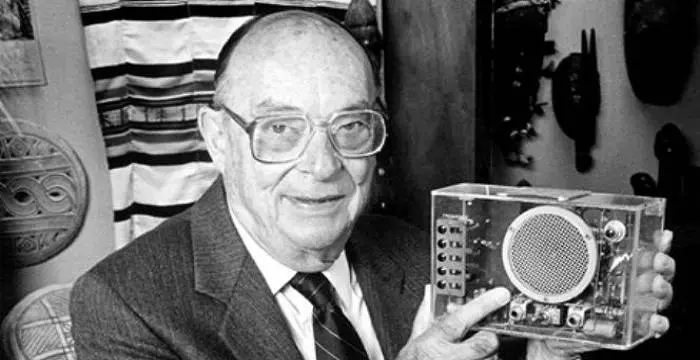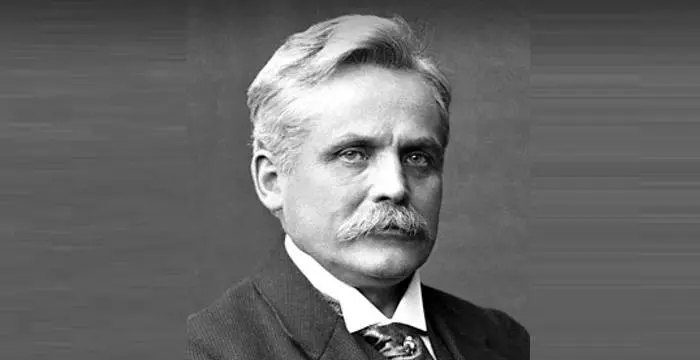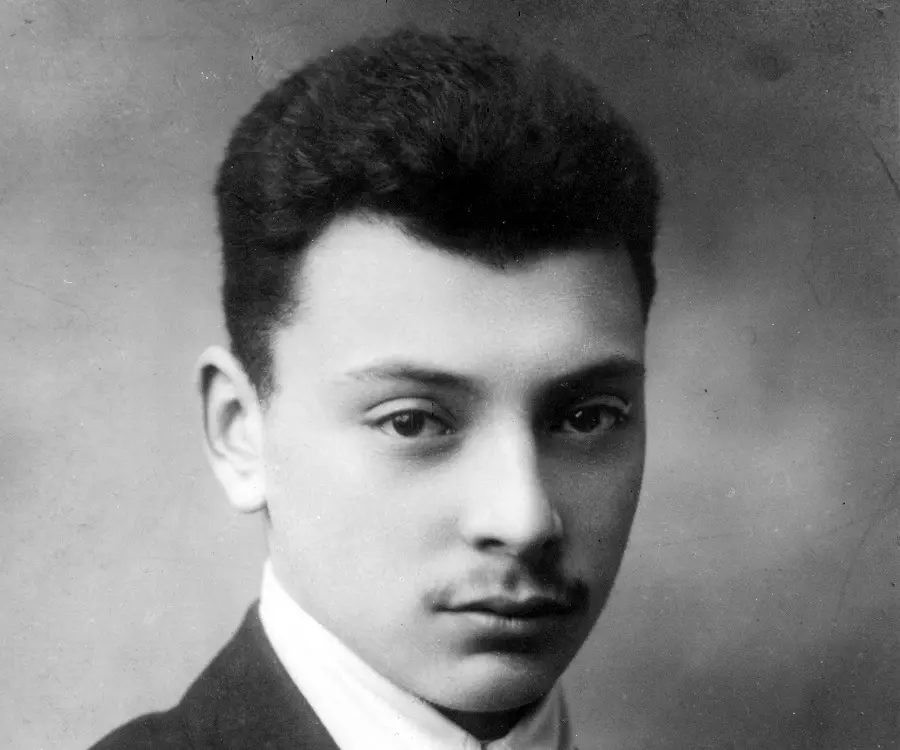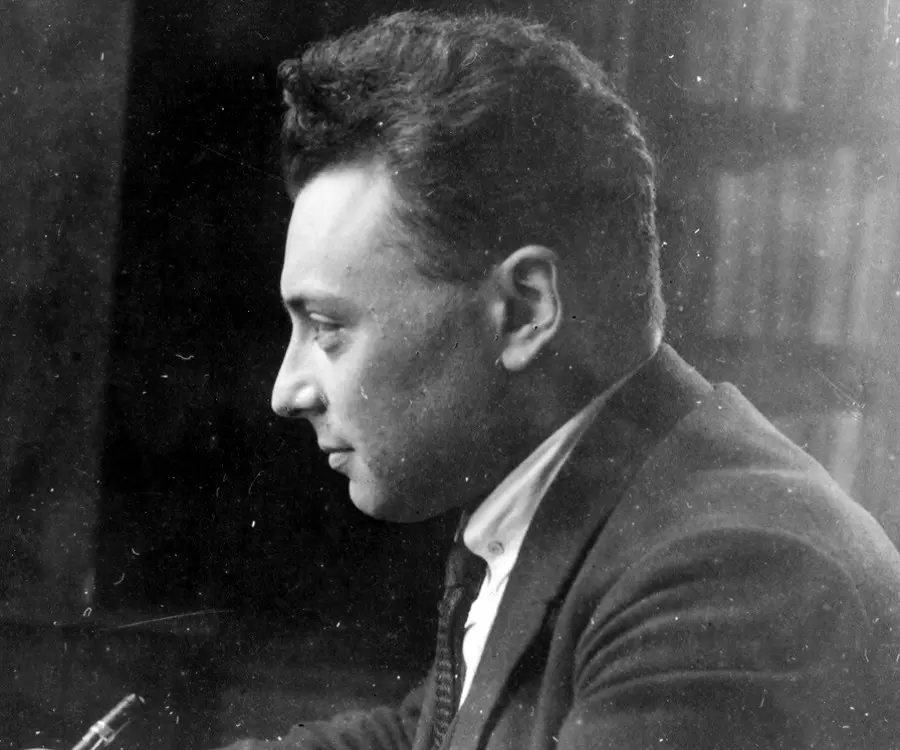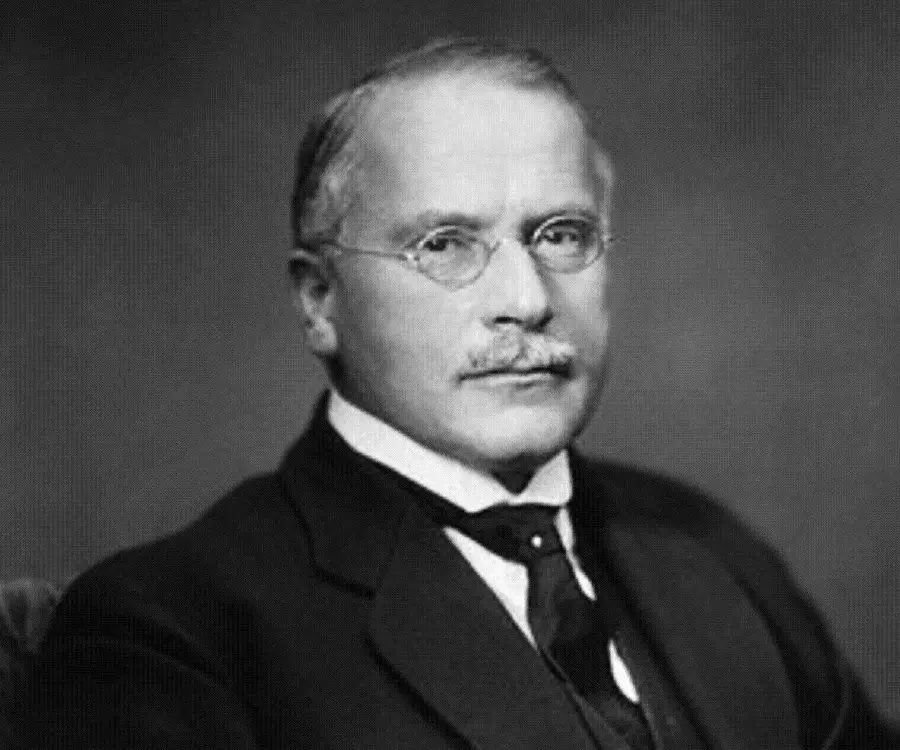
Wolfgang Pauli - Nobel Laureate in Physics, Birthday and Life
Wolfgang Pauli's Personal Details
Wolfgang Pauli was an Austrian-Swiss theoretical physicist, winner of Nobel Prize in Physics for his discovery of the ‘Exclusion Principle’
| Information | Detail |
|---|---|
| Birthday | April 25, 1900 |
| Died on | December 15, 1958 |
| Nationality | Austrian |
| Famous | Scientists, Physicists, Nobel Laureate in Physics |
| Spouses | Franziska Bertram, Käthe Margarethe Deppner |
| Siblings | Hertha Pauli |
| Universities |
|
| Discoveries / Inventions |
|
| Birth Place | Vienna, Austria |
| Religion | Agnostic |
| Gender | Male |
| Father | Wolfgang Joseph Pauli |
| Mother | Bertha Camilla Schütz |
| Sun Sign | Taurus |
| Born in | Vienna, Austria |
| Famous as | Nobel Laureate in Physics |
| Died at Age | 58 |
// Famous Nobel Laureate in Physics
Pierre Curie
Pierre Curie was a French physicist and Nobel laureate. This biography of Pierre Curie provides detailed information about his childhood, life, achievements, works & timeline.
John Bardeen
John Bardeen was an American physicist who won the Nobel Prize in Physics twice. This biography of John Bardeen provides detailed information about his childhood, life, achievements, works & timeline.
Wilhelm Wien
Wilhelm Wien was a German physicist who won Nobel Prize in Physics for his groundbreaking work in thermal radiation. This biography of Wilhelm Wien provides detailed information about his childhood, life, achievements, works & timeline.
Wolfgang Pauli's photo
Who is Wolfgang Pauli?
Wolfgang Ernst Pauli was an Austrian-Swiss theoretical physicist, winner of Nobel Prize in Physics for his discovery of the ‘Exclusion Principle’, also known as the ‘Pauli Principle’. He was born in Vienna and spent his career working as a theoretical physicist. He was a perfectionist who strived for absolute perfection in the scientific experiments performed by himself and others he worked with. His experiments led to the development of early concepts of quantum physics. He formulated the Pauli Exclusion Principle, perhaps his most important work, which states that no two electrons can exist in the same quantum state, identified by four quantum numbers including his new two-valued degree of freedom. He was also the first researcher to recognize the neutrino as an actual particle. This produced the best understanding available at the time of the structure of an atom. His path-breaking work was appreciated when he was awarded the Nobel Prize in Physics. He was nominated for this prestigious award by none other than Albert Einstein. His scientific career crossed paths with many of the great researchers in physics and he worked with several notable physicists including Niels Bohr and Max Born. In an era that produced many of the great physicists, he is counted among the greatest minds and one of the pioneers of quantum physics.
// Famous Physicists
Henry Cavendish
Henry Cavendish was a theoretical chemist and physicist, renowned for discovery of hydrogen and calculation of the mass of earth. To know more about his childhood, profile, timeline and career read on
Walter Kohn
Nobel Laureate Walter Kohn was an Austrian-born American theoretical chemist and physicist. Check out this biography to know about his childhood, life, achievements, works & timeline.
Nikola Tesla
Nikola Tesla was a Serbian-American inventor, best known for his development of alternating current electrical systems. This biography of Nikola Tesla provides detailed information about his childhood, life, achievements, works & timeline.
Childhood & Early Life
He was born on April 25, 1900 in Vienna, Austria to Wolfgang Joseph Pauli, a chemist, and his wife, Berta Camilla Schütz. He had a sister, Hertha Ernestina Pauli, who became an actress.
His grandparents were from Prague; his great grandfather was Wolf Pascheles, a great Jewish publisher. He was raised as a Roman Catholic, although eventually he and his parents quit the Church.
He received his early education from the Döblinger-Gymnasium in Vienna. He graduated with distinction from high school in 1918.
Later, he attended the Ludwig-Maximilians University in Munich where he received his PhD in theoretical physics in July 1921.
Career
After obtaining his doctorate, he spent a year at the University of Göttingen as an assistant to Max Born. He also assisted Wilhelm Lenz at the University of Hamburg in 1922.
In 1922–23, he took a one-year leave to work at Niels Bohr’s Institute for Theoretical Physics in Copenhagen.
From 1923 to 1928, he served as a lecturer at the University of Hamburg. During this period, he was instrumental in the development of the modern theory of quantum mechanics.
In 1925, he formulated the exclusion principle, which stated that no two electrons could exist in the same quantum state.
During the 1920s Heisenberg published the matrix theory of modern quantum mechanics which Pauli used to derive the observed spectrum of the hydrogen atom, in 1926.
In continuation of his works, he introduced the Pauli matrices as a basis of spin operators in 1927, thus solving the nonrelativistic theory of spin.
In 1928, he was appointed the Professor of Theoretical Physics at the Swiss Federal Institute of Technology in Zurich, Switzerland. He held visiting professorships at the University of Michigan in 1931, and the Institute for Advanced Study at Princeton in 1935.
He immigrated to the United States during the World War II years and served as the Professor of Theoretical Physics at Princeton. He attained naturalized American citizenship in 1946 before returning to Switzerland.
After returning to Switzerland, he rejoined as the Professor of Theoretical Physics at the Swiss Federal Institute of Technology, Zürich.
Major Works
In 1925, he made his most famous discovery, the ‘Exclusion Principle’, addressing the anomalous Zeeman Effect by deducing that two electrons in an atom can never share the same quantum state or configuration at the same time.
In 1930, he conjectured the existence of neutral particles, which later came to be known as neutrinos, to preserve the conservation of energy in nuclear beta decay.
In 1940, he proved the spin-statistics theorem which states that particles with half-integer spin are fermions, while particles with integer spin are bosons.
In 1949, his research resulted in the Pauli-Villars regularization. This mathematical formula changes infinite values to finite numbers when used in calculations. This removed some infinite variables from the theories used in quantum physics theories.
Awards & Achievements
In 1931, he was honored with the Lorentz Medal by the Royal Netherlands Academy of Arts and Sciences.
In 1945, he was awarded the Nobel Prize in Physics for the discovery of the ‘Exclusion Principle’.
In 1953, he was elected a Foreign Member of the Royal Society.
In 1956, he was awarded the prestigious Matteucci Medal.
He received the Max Planck Medal awarded by the German Physical Society in 1958.
Personal Life & Legacy
His middle name came from his godfather, Ernst Mach, an Austrian physicist and philosopher.
In 1929, he married a Berlin dancer, Käthe Margarethe Deppner. But, the couple got divorced within a year in 1930. Shortly after the divorce from his first wife, he suffered a severe breakdown and was treated by the psychiatrist, Carl Jung.
Even though his treatment ended in 1934, he and Carl developed an extensive correspondence over the following years concerning physics and psychology.
In 1934, he married Franziska Bertram. They had no children.
He died on December 15, 1958 in Zurich, Switzerland due to pancreatic cancer. He was buried in Zollikon Cemetery, Zürich, Switzerland.
Trivia
‘The Pauli Effect’ is a term, named after him, referring to the apparently mysterious, anecdotal failure of technical equipment in his presence. The term was coined using his name after numerous instances in which demonstrations involving equipment suffered technical problems only when he was present.
// Famous Scientists
Juliane Koepcke
Juliane Koepcke is a German-Peruvian biologist, who was the lone survivor among the 92 passengers and crew of the ill-fated LANSA Flight 508 that crashed in the Peruvian rainforest on 24 December 1971. Know more about her life in this biography.
Henry Cavendish
Henry Cavendish was a theoretical chemist and physicist, renowned for discovery of hydrogen and calculation of the mass of earth. To know more about his childhood, profile, timeline and career read on
Konstantin Tsiolkovsky
Konstantin Tsiolkovsky was a Russian rocket scientist and a pioneer of astronautics. This biography provides detailed information about his childhood, family, personal life, career, achievements, etc.
Wolfgang Pauli's awards
| Year | Name | Award |
|---|---|---|
Other | ||
| 0 | 1931 - Lorentz Medal | |
| 0 | 1945 - Nobel Prize in Physics | |
| 0 | 1956 - Matteucci Medal | |
| 0 | 1958 - Max Planck Medal | |
Wolfgang Pauli biography timelines
- // 25th Apr 1900He was born on April 25, 1900 in Vienna, Austria to Wolfgang Joseph Pauli, a chemist, and his wife, Berta Camilla Schütz. He had a sister, Hertha Ernestina Pauli, who became an actress.
- // 1918He received his early education from the Döblinger-Gymnasium in Vienna. He graduated with distinction from high school in 1918.
- // 1921Later, he attended the Ludwig-Maximilians University in Munich where he received his PhD in theoretical physics in July 1921.
- // 1922After obtaining his doctorate, he spent a year at the University of Göttingen as an assistant to Max Born. He also assisted Wilhelm Lenz at the University of Hamburg in 1922.
- // 1923 To 1928From 1923 to 1928, he served as a lecturer at the University of Hamburg. During this period, he was instrumental in the development of the modern theory of quantum mechanics.
- // 1925In 1925, he made his most famous discovery, the ‘Exclusion Principle’, addressing the anomalous Zeeman Effect by deducing that two electrons in an atom can never share the same quantum state or configuration at the same time.
- // 1926During the 1920s Heisenberg published the matrix theory of modern quantum mechanics which Pauli used to derive the observed spectrum of the hydrogen atom, in 1926.
- // 1927In continuation of his works, he introduced the Pauli matrices as a basis of spin operators in 1927, thus solving the nonrelativistic theory of spin.
- // 1928In 1928, he was appointed the Professor of Theoretical Physics at the Swiss Federal Institute of Technology in Zurich, Switzerland. He held visiting professorships at the University of Michigan in 1931, and the Institute for Advanced Study at Princeton in 1935.
- // 1929In 1929, he married a Berlin dancer, Käthe Margarethe Deppner. But, the couple got divorced within a year in 1930. Shortly after the divorce from his first wife, he suffered a severe breakdown and was treated by the psychiatrist, Carl Jung.
- // 1930In 1930, he conjectured the existence of neutral particles, which later came to be known as neutrinos, to preserve the conservation of energy in nuclear beta decay.
- // 1931In 1931, he was honored with the Lorentz Medal by the Royal Netherlands Academy of Arts and Sciences.
- // 1934In 1934, he married Franziska Bertram. They had no children.
- // 1940In 1940, he proved the spin-statistics theorem which states that particles with half-integer spin are fermions, while particles with integer spin are bosons.
- // 1945In 1945, he was awarded the Nobel Prize in Physics for the discovery of the ‘Exclusion Principle’.
- // 1946He immigrated to the United States during the World War II years and served as the Professor of Theoretical Physics at Princeton. He attained naturalized American citizenship in 1946 before returning to Switzerland.
- // 1949In 1949, his research resulted in the Pauli-Villars regularization. This mathematical formula changes infinite values to finite numbers when used in calculations. This removed some infinite variables from the theories used in quantum physics theories.
- // 1956In 1956, he was awarded the prestigious Matteucci Medal.
- // 1958He received the Max Planck Medal awarded by the German Physical Society in 1958.
- // 15th Dec 1958He died on December 15, 1958 in Zurich, Switzerland due to pancreatic cancer. He was buried in Zollikon Cemetery, Zürich, Switzerland.
// Famous Taurus Celebrities peoples
Jason Simpson
Jason Simpson is the son of former NFL running back, broadcaster and actor O. J. Simpson. Check out this biography to know about his childhood, family, life, and little known facts about him.
Sophie Reade
Sophie Victoria Reade is a British model and reality show star. Let’s take a look at her family and personal life, including her age, birthday, boyfriends, and some interesting facts.
ASMR Aspen
ASMR Aspen is an American YouTuber. Check out this biography to know about her birthday, childhood, family life, achievements and fun facts about her.
Bertil Gotthard Ohlin
Bertil Gotthard Ohlin was a famous Swedish economist. This biography profiles his childhood, family life & achievements.
Josh Temple
Check out all that you wanted to know about Josh Temple (Slogoman), the famous British YouTube Personality; his birthday, his family and personal life, his girlfriends, fun trivia facts and more.
Aidan Prince
Aidan Prince is an American dancer, actor and vlogger. Let’s have a look at his family and personal life including age, date of birth, net worth, and fun facts.
Wolfgang Pauli's FAQ
What is Wolfgang Pauli birthday?
Wolfgang Pauli was born at 1900-04-25
When was Wolfgang Pauli died?
Wolfgang Pauli was died at 1958-12-15
Where was Wolfgang Pauli died?
Wolfgang Pauli was died in Zurich, Switzerland
Which age was Wolfgang Pauli died?
Wolfgang Pauli was died at age 58
Where is Wolfgang Pauli's birth place?
Wolfgang Pauli was born in Vienna, Austria
What is Wolfgang Pauli nationalities?
Wolfgang Pauli's nationalities is Austrian
Who is Wolfgang Pauli spouses?
Wolfgang Pauli's spouses is Franziska Bertram, Käthe Margarethe Deppner
Who is Wolfgang Pauli siblings?
Wolfgang Pauli's siblings is Hertha Pauli
What was Wolfgang Pauli universities?
Wolfgang Pauli studied at Ludwig Maximilian University of Munich
What is Wolfgang Pauli's inventions/discoveries?
Law Of Nature was invented (or discovered) by Wolfgang Pauli
What is Wolfgang Pauli's religion?
Wolfgang Pauli's religion is Agnostic
Who is Wolfgang Pauli's father?
Wolfgang Pauli's father is Wolfgang Joseph Pauli
Who is Wolfgang Pauli's mother?
Wolfgang Pauli's mother is Bertha Camilla Schütz
What is Wolfgang Pauli's sun sign?
Wolfgang Pauli is Taurus
How famous is Wolfgang Pauli?
Wolfgang Pauli is famouse as Nobel Laureate in Physics

